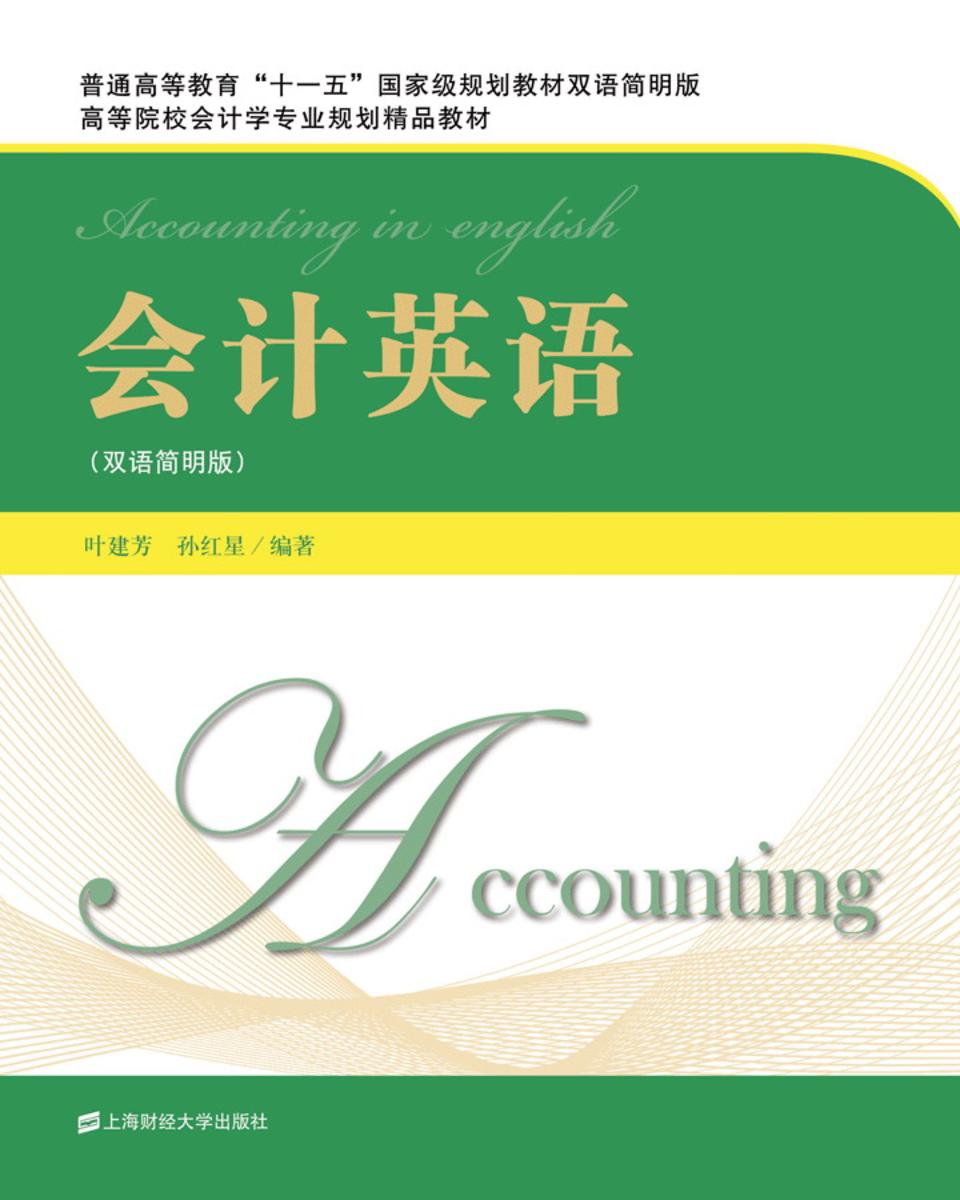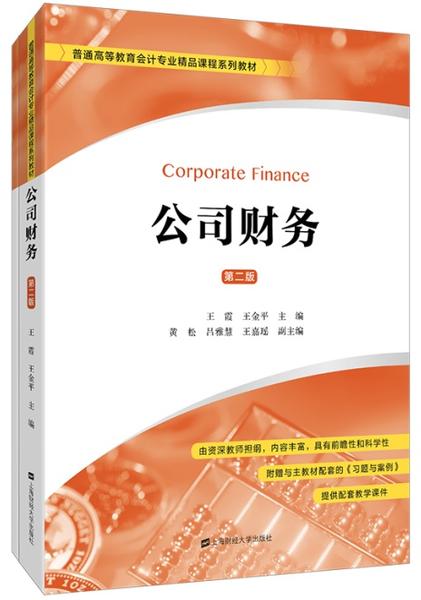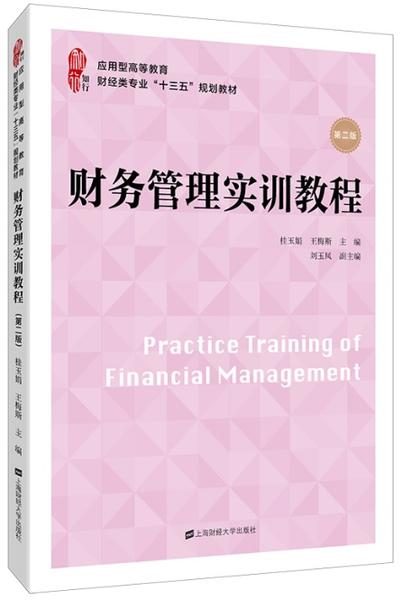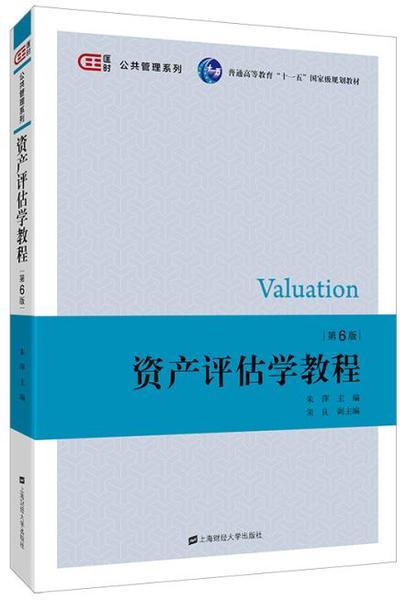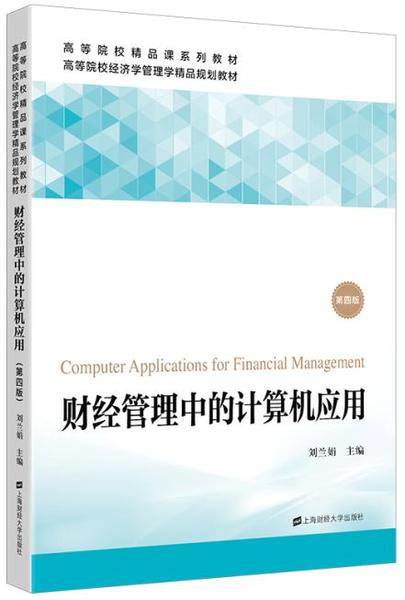首页 > 图书中心 > 教学用书 > 本科研究生 > 商学
会计英语-叶建芳 孙红星
丛书名:高等院校会计学专业规划精品教材
著(译)者:叶建芳 孙红星
资源下载:无资源下载
责任编辑:王永长
字 数:434千字
开 本:16 开
印 张:21
出版版次:1-1
出版年份:2009-12-01
书 号:978-7-5642-0622-2/F.0622
纸书定价:31.00元 教师会员可用500积分申请样书
根据读者的要求,为了适应不同层面相关专业人员的会计英语学习的需求,现在“‘十一五’国家级规划重点教材”《会计英语》的基础上进行重新编写了《会计英语》(双语简明版),教材分为九章,第一至第三章是对会计的性质以及会计信息产生过程的叙述;第四至第八章是关于资产、负债和所有者权益的确认、计量和报告;第九章是关于有关企业经营
-
- 根据读者的要求,为了适应不同层面相关专业人员的会计英语学习的需求,现在“‘十一五’国家级规划重点教材”《会计英语》的基础上进行重新编写了《会计英语》(双语简明版),教材分为九章,第一至第三章是对会计的性质以及会计信息产生过程的叙述;第四至第八章是关于资产、负债和所有者权益的确认、计量和报告;第九章是关于有关企业经营活动对现金流量表的影响,以及如何编制现金流量表。为了满足读者需要,最后附录中有主要报表的中英文对照表。
本教材的特点在于简化了相关章节的内容,力求精简。本书适应于各种类型院校的财务会计专业学生以及企业相关财务人员的学习。
- 根据读者的要求,为了适应不同层面相关专业人员的会计英语学习的需求,现在“‘十一五’国家级规划重点教材”《会计英语》的基础上进行重新编写了《会计英语》(双语简明版),教材分为九章,第一至第三章是对会计的性质以及会计信息产生过程的叙述;第四至第八章是关于资产、负债和所有者权益的确认、计量和报告;第九章是关于有关企业经营活动对现金流量表的影响,以及如何编制现金流量表。为了满足读者需要,最后附录中有主要报表的中英文对照表。
-
-
1  An Introduction to Accounting/1
 1.1  Accounting is an Information System/2
 1.2  Forms of Organization/2
 1.3  The Framework for the Preparation and Presentation of Financial
Statements/3
 1.4  Understanding of Financial Statements/5
• Balance Sheet/5
• Income Statement (Statement of financial performance)/6
• Statement of Owner’s Equity/6
• Statement of Cash Flow/8
 1.5  Accounting and Its Profession /9
 1.6  Accounting Elements and Using the Accounting Equation/9
• What is Accounting Equation/9
• Effects of Transactions on the Accounting Equation/10
 1.7  Ethics in Accounting/13
•Some Basic Ethical Standards/13
 Vocabulary/14
 SelfTest Questions/15
 Discussion Questions/16
 Exercises/16
 Problems/18
2  Recording Transactions/22
 2.1  Economic Events and Business Documents/23
 2.2  T Accounts and Debit & Credit/23
•Types of Accounts/24
•Chart of Accounts and Ledger/26
•The Accounting Equation and the Rules of Debits and Credits/27
•Normal Balances/27
 2.3  Journalizing and Posting Transactions/27
•Journalizing Transactions/30
•Posting Transactions/33
 2.4  Preparing a Trial Balance/36
•Trial Balance/36
•Locating and Correcting Errors/37
•Formatting Conventions/38
 2.5  Using the Information—the Debt Ratio/38
 Vocabulary/39
 SelfTest Questions/40
 Discussion Questions/41
 Exercises/41
 Problems/42
3  Adjusting the Accounts, Preparing the Statements, and Completing the Accounting Cycle/46
 3.1  The Need for Adjustments/47
•Time Period Principle/47
•Need for Adjustments at the End of an Accounting Period/47
•Accrual and Cash Basis of Accounting/48
 3.2  Adjusting the Accounts/49
•Prepaid Expenses/49
•Depreciation/50
•Unearned Revenues/52
•Accrued Expenses/53
•Accrued Revenues/53
 3.3  Adjusted Trial Balance and Preparation of Financial Statements/54
 3.4  Using the Worksheet/60
•Purpose of the Worksheet/60
•Preparing Worksheets/61
 3.5  Closing Entries/62
•Purpose of Closing Entries/63
•Preparing the Closing Entries/63
 3.6  PostClosing Trial Balance/65
 3.7  Classification of Balance Sheet Items/66
•Assets/66
•Liabilities/67
•Owner’s Equity/67
 3.8  Using the Information—the Current Ratio/69
 Vocabulary/69
 SelfTest Questions/70
 Discussion Questions/70
 Exercises/72
 Problems/73
4  Accounting for Merchandising Enterprises/77
 4.1  Service Enterprise versus Merchandising Concern/78
•Service Enterprise/78
•Merchandising Enterprise/78
• Periodic and Perpetual Inventory Systems/78
 4.2  Purchase, Sales Revenue and Cost of Goods Sold/79
•Merchandise Purchases—Perpetual Inventory System/79
•Purchase Returns and Allowances/79
•Trade Discounts/79
•Purchase Discounts/80
•Transportation Costs/81
•Revenue from Sales and Cost of Goods Sold—Perpetual Inventory System/83
•Sales Returns and Allowances /83
•Sales Discounts/84
•Shrinkage/85
•Summary of Merchandising Cost Flows/85
 4.3  Multiplestep Income Statement/86
 4.4  Worksheet for a Merchandising Enterprise and Closing Entries/88
•Worksheet for a Merchandiser/88
•Closing Entries/91
 4.5  Special Journals/91
•Sales Journal/92
•Cash Receipts Journal/92
•Purchases Journal/93
•Cash Disbursements Journal/94
•Testing the Accuracy of Ledgers/94
•Subsidiary Inventory Records/97
 4.6  Using the Information—AcidTest Ratio, Gross Margin Ratio/97
 Vocabulary/98
 SelfTest Questions/99
 Discussion Questions/100
 Exercises/100
 Problems/102
5  Accounting for Cash, Temporary Investments, and Receivables/104
 5.1  Cash, Cash Equivalents, and Liquidity/105
 5.2  Internal Control over Cash/105
•The Characteristics of an Effective System of Internal Control/106
•Internal Control for Cash/106
 5.3  The Petty Cash Fund/107
•Establishing the Fund/107
•Making Petty Cash Payments/107
•Reimbursing the Fund/107
 5.4  Reconciling the Bank Balance/108
•Bank Statement/108
•Need for Reconciling the Bank Balance/109
•Steps in Reconciling the Bank Balance/110
 5.5  Trading Securities/112
•Accounting for Trading securities/112
•Balance Sheet Presentation/113
 5.6  Credit Sales and Bad Debts/113
•Design Internal Controls for Receivables/114
•Allowance Method of Accounting for Bad Debts/114
•Writing off a Bad Debt/114
•Bad Debt Recoveries/114
•Estimating the Amount of Bad Debt Expense/115
•Direct WriteOff Method of Accounting for Bad Debts/117
 5.7  Promissory Notes/118
•Recording Receipt and Collection of a Note/119
•Dishonored Notes Receivable/119
•Discounting Notes Receivable/119
•Recording the Discounting of Notes Receivable/121
•Contingent Liability and the Full Disclosure Principle/121
 5.8  Converting Receivable into Cash/121
•Selling Accounts Receivable/121
•Pledging Accounts Receivable/122
 5.9  Using the Information—Accounts Receivable Turnover/122
 Vocabulary/122
 SelfTest Questions/123
 Discussion Questions/124
 Exercises/125
 Problems/125
6  Inventories and Cost of Goods Sold/128
 6.1  Cost to Be Included in Inventories/129
•What Is Inventory?/129
•Who Owns the Inventory?/130
 6.2  Inventory Systems/131
 6.3  Inventory Cost Flow Assumptions/132
•Periodic Inventory System/134
•Perpetual Inventory System/135
•Consistency in the Application of Inventory Valuation Procedures/136
 6.4  Inventory Errors/136
 6.5  Valuation Using Lower of Cost or Market (LCM) Method/137
 6.6  Inventory Estimation Method/140
 6.7  Analysis the Information—Merchandise Turnover/141
 Vocabulary/143
 SelfTest Questions/144
 Discussion Questions/145
 Exercises/145
 Problems/147
7  LongTerm Assets: Investments, Fixed Assets, Natural Resources and
Intangible Assets/150
 7.1  Type of LongTerm Assets/151
 7.2  LongTerm Investment/152
•Availableforsale Securities/153
•Cost Method/153
•Equity Method/154
 7.3  Acquisition of Fixed Assets/155
•Capital Expenditure & Revenue Expenditure/155
•Acquisition for Cash/156
•Subsequent Expenditures/156
•Acquisition through Leasing/157
•Acquisition via Exchange/158
•Acquisition with a Basket Purchase/159
•Acquisition from Donations/159
•Acquisition through SelfConstruction/159
 7.4  Depreciation/161
•The StraightLine (SL) Method/161
•Accelerated Methods/161
•SumoftheYears’Digits Method/162
•DecliningBalance Method/163
•Revision of Estimated Depreciation/164
 7.5  Disposal of Plant Assets/165
 7.6  Accounting for Natural Resources/166
 7.7  Accounting for Intangible Assets/167
•Valuation of Purchased Intangibles/168
•Amortization of Intangible Assets/168
•Patents/169
•Copyrights/169
•Franchises/169
•Trademarks/170
•Goodwill/170
 7.8  Other Assets/171
•Preoperating Expenses/171
•Deferred Expenses/171
 7.9  Impairment of LongTerm Assets/171
 7.10  Using the Information—Return on Total Assets & Asset Turnover/172
 Vocabulary/173
 SelfTest Questions/174
 Discussion Questions/175
 Exercises/175
 Problems/177
8  Current and LongTerm Liabilities/180
 8.1  The Nature of Liabilities/181
•The Definition of Liabilities Includes Five Key Points/181
•Distinction Between Debt and Equity/181
 8.2  Current Liabilities/182
 8.3  Determinable Current Liabilities/182
•Trade Accounts Payable/183
•Current Notes Payable and ShortTerm Loan/183
•Advances from Customers/184
•Current Maturities of LongTerm Obligations/184
•Dividend Payable/184
•ThirdParty Collections/184
 8.4  Current Liabilities Dependent on Operating Results/185
•Income Taxes Payable/185
•Temporary Differences/185
•Permanent Differences/186
 8.5  Contingencies/187
•Contingent Asset/187
•Contingent Liability/188
 8.6  Time Value of Money/189
•Simple versus Compound Interest/190
•Future Value of a Single Amount/191
•Present Value of a Single Amount/191
•Future Value of an Annuity/192
•Present Value of an Annuity/192
 8.7  NonCurrent Liabilities/193
•Bonds Payable/193
•Accounting for Bonds Payable/194
•Capital Lease Payable /201
 8.8  Using the Information—Times Interest Earned/203
 Vocabulary/203
 SelfTest Questions/204
 Discussion Questions/206
 Exercises/206
 Problems/208
9  Owner’s Equity/212
 9.1  Difference between a Loan and an Investment/212
 9.2  Forms of Business Organization/213
 9.3  Corporate Organization/214
•Rights of Stockholders/214
•Functions of the Board of Directors/215
 9.4  Corporate Capital/216
•Authorized Stock/216
•Par Value/216
•NoPar Value/217
•Common Stock/217
•Issuance of Par Value Stock/217
•Issurance of NoPar Value Stock/218
 9.5  Treasury Stock/218
•Purchase Treasury Stock/219
•Reissue Treasury Stock/219
•Retirement of Stock/220
 9.6  Income & Retained Earnings/221
•Income/221
•Earnings per Share (EPS)/223
•Retained Earnings/224
•Prior Period Adjustments/224
•Appropriated (or Restricted) Retained Earnings/225
 9.7  Dividends and Stock Split/225
•Cash Dividends/225
•Dividend Dates/226
•Stock Dividends/226
•Stock Split/227
 9.8  Using the Information—Dividend Yield and PriceEarnings Ratio/228
 Vocabulary/228
 SelfTest Questions/229
 Discussion Questions/231
 Exercises/231
 Problems/233
10  Statement of Cash Flows/236
 10.1  Cash and Cash Equivalents/237
 10.2  Classification of Cash Receipts and Cash Payments/238
•Cash Flows from Operating Activities/238
•Cash Flows from Investing Activities/238
•Cash Flows from Financing Activities/239
 10.3  Preparing Cash Flow Statement—Direct Method/239
•Converting Sales to Cash Collected from Customers/240
•Converting Cost of Goods Sold to Cash Paid for Goods/242
•Converting Wages Expense to Cash Paid to and on Behalf of
Employees/242
•Converting Taxes Expense to Payments of All Types of Taxes/243
•Cash Paid Relating to Other Operating Activities/243
•Compiling the Operating Activities Section of the Statement of Cash Flow/244
 10.4  Preparing Cash Flow Statement—Indirect Method/245
 10.5  Determining Cash Flows from Investing Activities/247
 10.6  Determining Cash Flows from Financing Activities/250
 10.7  Presenting the Information in the Form of the Statement of Cash Flows/251
 10.8  Usefulness of the Statement of Cash Flows/253
 SelfTest Questions/254
 Discussion Questions/255
 Exercises/255
 Problems/257
 Appendix 1:Balance Sheet/260
 Appendix 2:Profit and Loss Account/262
 Appendix 3:Format of Statement of Cash Flow Reference in China/263
 Appendix 4:Future Value of $1/267
 Appendix 5:Present Value of $1/269
 Appendix 6:Present Value of Annuity of $1/271
 Appendix 7:Future Value of Annuity of $1/273
 Appendix 8:Solution of exercises and problems/275

